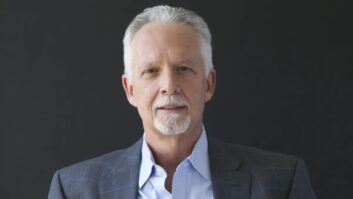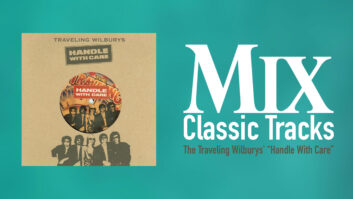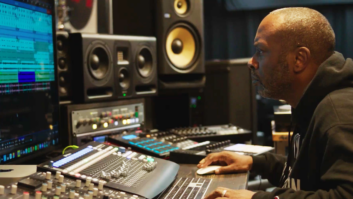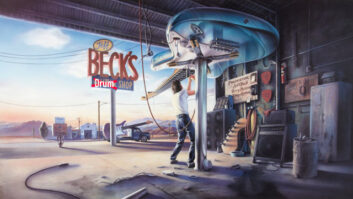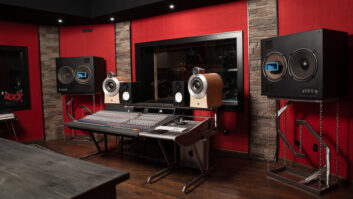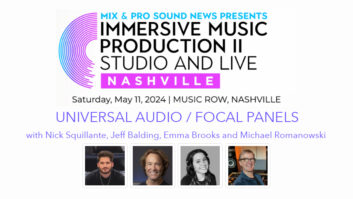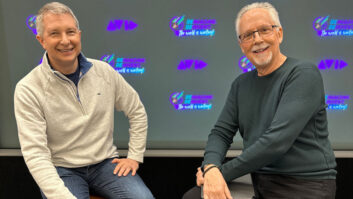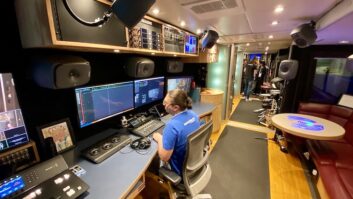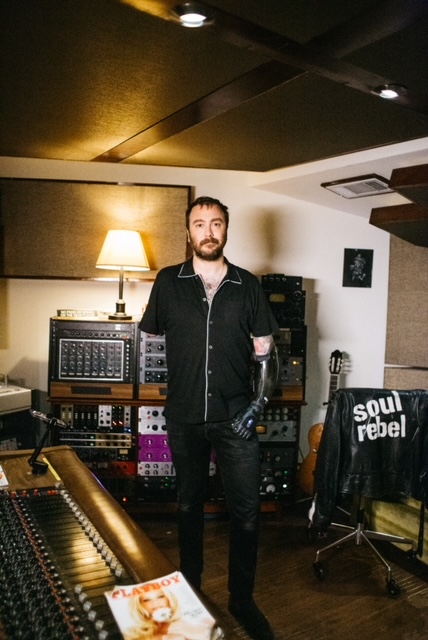
Dallas, TX (October 12, 2022)—The last time Mix spoke with Jeff Saenz, owner of Modern Electric in Dallas, was in 2018. For Saenz, that was a lifetime ago. On June 1, 2021, everything changed when he came in contact with a fallen power line in his backyard and woke up in the hospital almost two weeks later—to be told by his fiancé that doctors were forced to amputate his left hand.
As time went on, the outcome became worse. Doctors ended up removing both his hands and portions of his arms. For a guitar player and engineer, it was beyond devastating. He and his loved ones were simply grateful that he was alive.
Family and work, it turns out, proved most crucial in his recovery. He went back into the studio three months after the accident, and now refers to time there as his “best medicine.”
“If you were to tell me before any of this happened what was going to happen, and you were to ask me if I was going to be back at it as quickly as I was, there is no way I would think that was possible,” Saenz asserts, “but it’s part of the healing process and part of the survival—getting back to what you know. It’s finding solace in finding ways to navigate the things that mean the most. When you love what you do….”
He may not be able to play guitar for the rest of his life and he’s definitely had to change his role a bit in the studio by hiring engineers and focusing on producing, but being around music is what keeps him going.
BEFORE…AFTER…
The last project he engineered before the accident was for Barton Stanley David. The night before it happened, he and Matt Pence were mixing “All Ways,” “Cicada” and the title track from David’s most recent album, Crest.
“I am very proud of the work Barton and I have done together, and his releases have begun to find their way into the world in the months since I’ve been home from the hospital,” Saenz says. “Very healing to hear our completed work out there, as it is possibly some of the last engineering work of mine that will see the light of day.”
Prior to the accident, Saenz engineered roughly 50 percent of his projects, and on the other half, he was engineer/producer. He still collaborates with the engineer on what mics to use and will, for instance, discuss with the drummer what drums he might want to use, but now Saenz focuses on producing. He has been mostly using L.A. engineer Carter Jahn, a Grammy winner for his work on The War on Drugs’ A Deeper Understanding.
Studio Showcase: Modern Electric Sound Recorders
“I really love engineering as an art form, so it’s a little devastating because I literally can’t get my hands on a microphone and do all these things I love to do,” Saenz laments. “At the same time, I am able to collaborate with Carter, which has been incredible. It’s really bizarre to say that something great could come out of such a tragedy, but I really feel that the art we are creating together is very important and something I’m very proud of, maybe the most proud of in my musical career.”
The sessions he refers to are with a band called About You, with artist Max Poscente. He and Jahn are also working on Clayton Serafy’s first album, which Saenz describes as “on the Americana side of things. He grew up on the Texas-Mexico border down in Brownsville, so there’s a lot of Latin, Mexican feel.”
INSIDE MODERN ELECTRIC
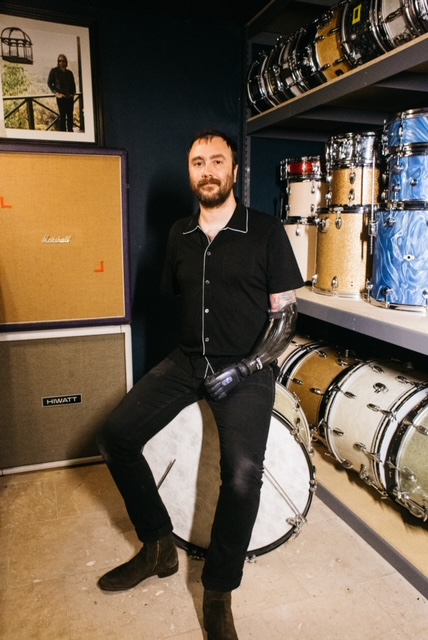
Modern Electric’s history goes back a long way. The studio itself was built in 1968, designed after some of the great Los Angeles rooms such as United/ Western, Hollywood Sound and Sunset Sound. To this day, Modern Electric offers the best of both worlds—vintage and modern. The console in Studio A is a 24-channel, inline MCI JH-416A.
“The only decision is whether we are tracking to tape or not,” Saenz says. “Everything else in the studio is analog on the front end, mostly vintage. We end up doing all of our editing in Pro Tools if we do any tracking to tape. I’m not going to pretend we’re just this ‘ultra computers turned off all the time, analog all the way’ place, but I’m literally sitting 14 inches away from a Studer 2-inch machine right now. When it comes to the tape machine, it’s definitely not something I want to give up. It’s not part of our daily workflow, but it is part of what we do here.”
In 2018, Saenz and his business/creative partner, Beau Bedford, added Studio B, which he describes as a “nicely treated, mix-oriented control room with an iso booth.” They’ve acquired quite a bit of gear since they last updated their website, including a move to Pro Tools HDX with current HD software, a 2020 Mac (6-core, 2TB, 64GB RAM) and a Lynx Aurora (n) 32 AD/DA, as well as Atomic SixTen monitors, two Bryston 4B amplifiers and a Grace Designs M905 Monitor Controller.
They’ve also added a lot of outboard gear and preamps, including four vintage Neve 1073s, two vintage Neve 1063s, two vintage Neve 1080s, eight Universal Audio 610s, two Gates PGM4s, two Langevin 5116s, six Langevin 251As, an API 3124, a Spectrasonics STX100, two Spectrasonics STX500s, a Shadow Hills Mastering Compressor, two API 550As, a Highland Dynamics BG1 and a BG2. They also now have a Lexicon 224 with LARC and a Maestro EP-3 Echoplex as well, and lots of additional mics and plug-ins far too numerous to mention.
Aside from Bedford and Saenz, there are a couple of other regular producers—Jason Burt and John Pedigo—who make use of the studio, and now Saenz says he wouldn’t mind opening the studio up to more.
LOOKING FORWARD
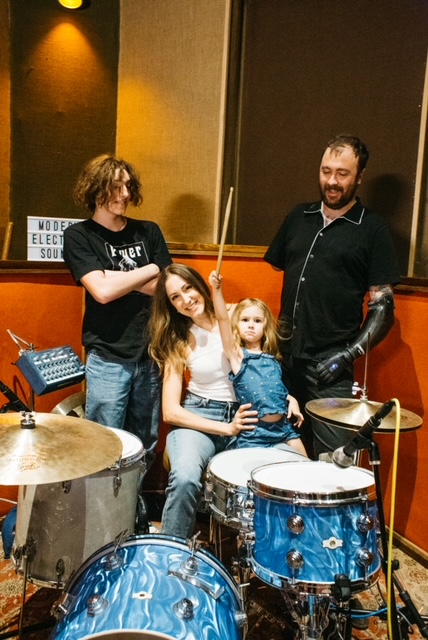
“If I could have it my way, I would be back to a Monday through Friday or Saturday, five- or six-day work week,” Saenz says. “Currently, Carter will come out from Los Angeles, or there are a couple of other engineers I use, and we will have a very intense two or two-and-a-half week session run, and then three weeks [off] before there’s another session. I would like to get more into a regular schedule. At least I have an amazing fiancé and a beautiful two-and-a-half-year-old little girl, and my fiancé has a 14-year-old boy, so we can enjoy the remainder of the summer together.”
Saenz got a prosthetic for his left arm around six months ago and says the learning curve is steep. “I’m trying to reach the top of the mountain, where things become easier with it on than without it,” he says. “I’ve learned to do a tremendous amount without it. You don’t sleep with these things on, so if you have to get up in the middle of the night to let the dogs out or get a glass of water, you learn to do it without it.”
While there are things he can’t do, will never be able to do, Saenz says he’s just happy to be here for his kids, to marry his fiancé and to make records. He knows how lucky he is to be alive.
